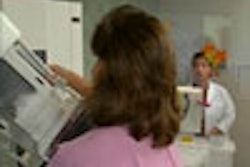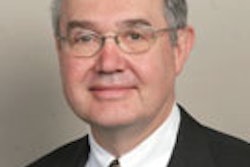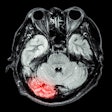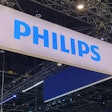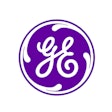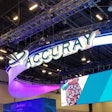When Fischer Imaging filed for Chapter 11 and announced its plan to sell off its assets in August 2006, many industry observers assumed it was the end of the line for the Denver-based developer of x-ray and mammography systems. The firm's demise exemplified the futility of competing in an industry that's come to be dominated by multinational, multimodality titans, some thought.
Think again. A group of Fischer veterans, led by longtime chief executive Morgan Nields, has acquired all of the company's x-ray-based assets and product rights, and has even set up shop in the same Denver building that Fischer once called its headquarters. The group is laying the groundwork for a return to radiology under the moniker Fischer Medical Technologies by targeting market niches that they believe have been overlooked by the large imaging vendors.
Fischer had a long history in medical imaging, dating back to 1910, when the company was founded by H.G. Fischer. The modern version of the company dates back to 1973, when Nields and co-founder Kinney Johnson took over the firm in a leveraged buyout and implemented a strategy of developing radiography and mammography systems that it sold both directly and through OEMs.
In the 1990s, Fischer began to shift its focus to women's imaging, largely on the strength of its SenoScan full-field digital mammography system and MammoTest stereotactic breast biopsy table. SenoScan received U.S. Food and Drug Administration clearance in 2001, but despite positive reviews of the system by clinical users, the company found it tough competing against larger rivals like GE Healthcare of Chalfont St. Giles, U.K., and Hologic of Bedford, MA.
Fischer also became distracted by an accounting scandal related to revenue-recognition practices that drew the attention of the U.S. Securities and Exchange Commission. The SEC in November 2004 found that Fischer misstated its revenue, inventory, net income, and gross profit in regulatory filings and press releases from the years 2000 to 2002.
Fischer began to encounter liquidity problems, and in June 2005 announced its plans to sell its mammography-related intellectual property to Hologic for $32 million (Hologic decided not to continue the SenoScan product line, and licensed the rights to the MammoTest product to Siemens Medical Solutions of Malvern, PA, late last year).
For Nields, who had stepped down as Fischer's chief executive in 2000, watching the company's decline was a painful experience. He attributes Fischer's demise to the management team that took over after his departure -- he believes they were inexperienced in the medical imaging market and made a number of poor decisions. The most grievous error came at the 2004 RSNA conference, when Fischer introduced a new version of SenoScan that wasn't ready to be shipped.
"When you do that, you freeze your customers from even taking delivery of what they've already bought, and your sales guys can't sell any more (of the older systems)," Nields said.
A fresh start
But Fischer's demise became an opportunity for Nields. The company put its radiography-based assets up for sale in August 2006, and initially announced a deal to sell them to contract manufacturer Byers Peak of Wheat Ridge, CO.
That agreement fell through, however, and Nields paired with Johnson once again to purchase the company's radiography and electrophysiology (EP) assets for about $800,000. They also assumed some of Fischer's warranties and service obligations to customers.
Nields is Fischer's chairman and CEO, while Ron Shores, who once ran power supply firm Creos Technologies, is president. The company has about 15 to 20 employees, and is occupying a portion of Fischer's old plant in Denver.
The company started service on Fischer's Bloom EP systems in the field in November, and began regular shipments of new EP systems this month. In radiography, Fischer marketed the SPX surgical C-arm and VersaRad/Traumex U-arm x-ray system. Unlike in the EP segment, however, Nields plans to rework the radiography products significantly before bringing them to market.
Nields sees an opportunity for radiography systems based on flat-panel digital detectors and conebeam CT technology, and believes Fischer's legacy technology can be adapted to target this niche. Such systems can produce 3D images that surgeons and emergency room physicians would find to be a major improvement over the static images they are currently viewing.
"The biggest thing I see is the availability of conebeam CT and 3D imaging with an x-ray system. You could never do it with film, and it's not even feasible with a tomosynthesis system," Nields said. "But if you take multiple projections of a body part as a C-arm does, you can process them similar to the way CT images are. I see it as a sea change in the industry."
Fischer engineers plan to work on adapting the SPX and VersaRad systems to accept the precision servo technology required to move an x-ray tube assembly to create conebeam CT images. The company is also researching flat-panel digital detector suppliers to replace conventional image intensifiers, and the firm is making plans to develop the software algorithms required for processing 3D images.
Fischer plans to emphasize ceiling-mounted C-arms or U-arms, which Nields sees as filling a niche between large interventional angiography systems and small mobile C-arm systems. He hopes to have commercial radiography products available some time in 2008.
Is there still a role for independent imaging vendors in a world dominated by OEMs? Nields believes that there is, but only if independent companies pick market niches that aren't already occupied by the giant multinationals.
"It's always tough when you go up against solid and deep players, but we think we can identify niches for advanced applications that the larger companies don't want to dominate," Nields said, because those markets are too small. "If we were selling 'me too' products, we wouldn't be doing this, because we would be getting killed."
By Brian Casey
AuntMinnie.com staff writer
February 19, 2007
Related Reading
Fischer vets aim to revive company, February 2, 2007
Fischer sells remaining businesses, files Chapter 11, August 23, 2006
Hologic to sell Fischer biopsy assets to Siemens, July 7, 2006
Fischer gets final J&J, Kodak orders, March 16, 2006
Fischer signs service deal with Kodak, January 26, 2006
Copyright © 2007 AuntMinnie.com




